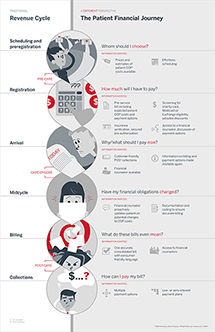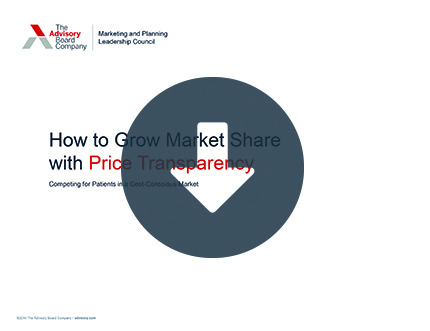The average price of an ED visit rose by 135% from 2008 to 2017, according to a new report from the Health Care Cost Institute (HCCI).
Primer series: How to address avoidable ED utilization
Report details
For the report, HCCI analyzed insurance claims from 2008 to 2017 for people age 65 and younger who received health insurance through their employer.
HCCI used the data to determine average charges and prices of hospital ED visits, patients' average out-of-pocket costs, and trends in how hospitals billed for ED use.
Average ED charges, prices are increasing
Overall, HCCI found that the average price of an ED visit increased significantly between 2008 and 2017.
For example, the average amount charged by providers for a hospital ED visit rose by 176% from 2008 to 2017, from $503 to $1,389.
The average price that patients and insurers actually paid per visit, which is typically lower than the charged amount due to negotiations between insurers and providers, rose from $393 to $924, an increase of 135%.
The researchers found the average out-of-pocket costs that patients paid for an ED visit also rose, increasing from $70 to $239.
High-severity billing codes are on the rise
When researchers examined how providers billed for ED visits, they noticed significant changes over time.
As USA Today reports, U.S. EDs assess patients on a 1 to 5 scale to gauge the complexity of the case and determine the amount billed for services. For example, a patient with a less severe case, such as an insect bite, might be assigned code 99281, while a heart attack patient would receive the highest billing code, 99285.
Researchers found that claims billed at 99285, the highest and most expensive billing code, increased from 17% of all ED visits in 2008 to 27% in 2017:
At the same time, the amount providers charged for cases coded as high-severity more than doubled from 2008 to 2017:
Why the increases in prices, charges?
The report found that Americans did not visit the ED more often in 2017 than they did in 2008—which one researcher suggested implies that the increase in billings for high-severity visits reflects more aggressive billing practices, rather than a rising severity of ED cases.
John Hargraves, a senior researcher at HCCI, said, "We don't see a big rise in overall [ED] rates. Which is what you'd expect if there's a large increase of people having heart attacks or other (more severe) things. I think that's telling." Hargraves added, "When you look at the last 10 years, it's really astonishing how this average cost of admission to the ER has gone up."
But the American Hospital Association (AHA) in separate research has found that ED visits per 1,000 patients increased almost 12% between 2006 and 2010, and that adults had a rising level of illness. One possible explanation for the discrepancy is that AHA's report examined hospital use by Medicare-eligible adults, while HCCI's report examined hospital claims of people under the age of 65.
Ashley Thompson, SVP of policy at AHA, said, "As hospitals serve as the front-door for dealing with issues ranging from violence, mental health conditions and the opioid epidemic, the number and complexity of ED visits overall continues to increase" (Alltucker, USA Today, 6/4; Gooch, Becker's Hospital CFO Report, 6/5).
Primer series: How to address avoidable ED utilization
Are specific patient populations making up a significant proportion of avoidable ED visits at your organization? In each primer, we profile organizations who have set up targeted programs and feature operational, staffing, and funding information.
Don't miss out on the latest Advisory Board insights
Create your free account to access 1 resource, including the latest research and webinars.
Want access without creating an account?
You have 1 free members-only resource remaining this month.
1 free members-only resources remaining
1 free members-only resources remaining
You've reached your limit of free insights
Become a member to access all of Advisory Board's resources, events, and experts
Never miss out on the latest innovative health care content tailored to you.
Benefits include:
You've reached your limit of free insights



